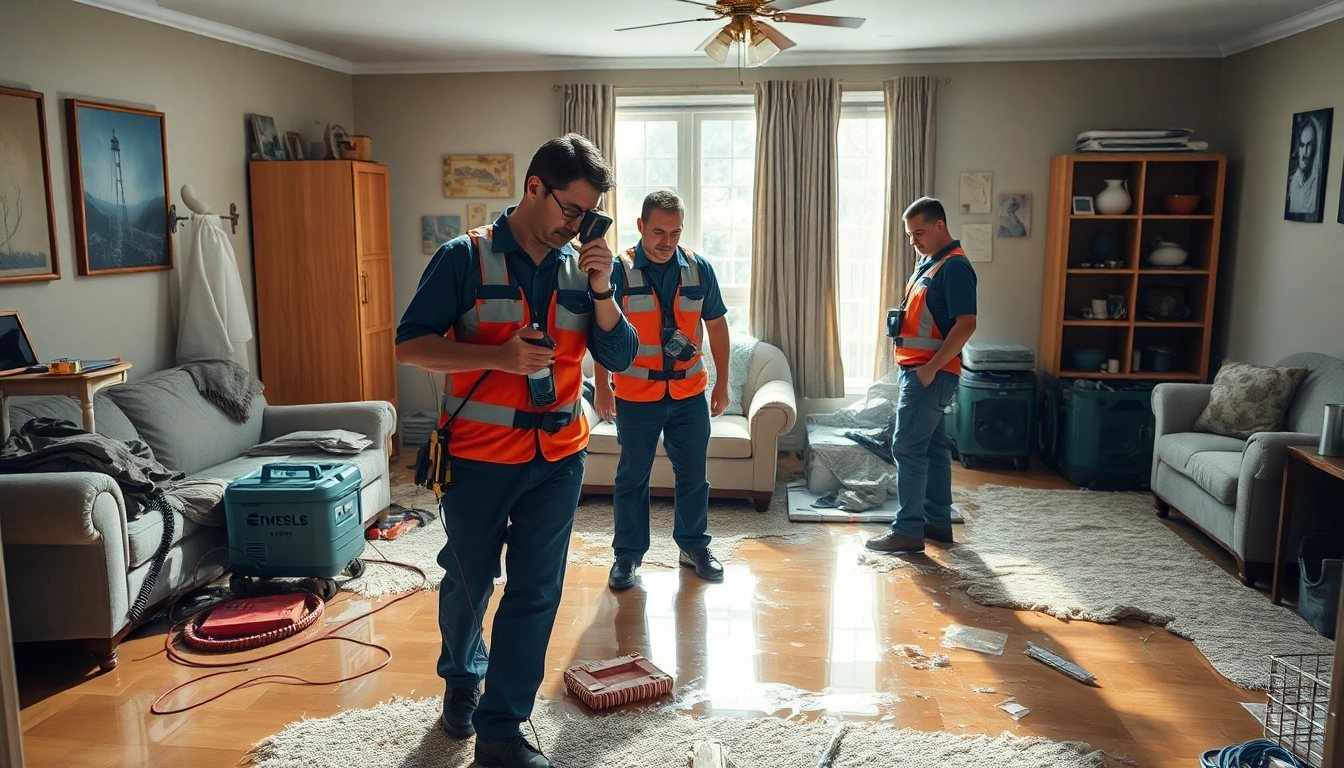Understanding Emergency Restoration
Definition of Emergency Restoration
Emergency restoration is a comprehensive process that involves the immediate response and remediation of property damage caused by unforeseen disasters. Whether it’s from water, fire, mold infestations, or natural disasters, emergency restoration encompasses a series of actions required to restore a property to its pre-damage condition efficiently. The goal is not just to repair damage but also to prevent further issues from arising, ensuring both the safety and comfort of occupants.
Importance of Quick Response
The critical factor in emergency restoration is time. A swift response significantly reduces the extent of damage and the costs associated with repairs. For instance, water damage can lead to mildew and mold growth within 24 to 48 hours, multiplying the restoration costs and potentially aggravating health risks. Thus, prompt action is paramount. Engaging with experienced professionals who offer Emergency Restoration services can dramatically streamline the recovery process and mitigate long-term consequences.
Common Scenarios Requiring Emergency Restoration
Emergency restoration is necessary in various scenarios, such as:
- Water Damage: Flooding, pipe bursts, and appliance malfunctions can cause significant water damage.
- Fire Damage: Fires not only damage structures but also lead to smoke and soot problems that necessitate specialized cleaning and repairs.
- Mold Contamination: Mold can develop rapidly in damp conditions, requiring immediate attention to avert health risks.
- Sewage Backups: Exposure to contaminated water is a serious health hazard, making swift remediation crucial.
- Storm Damage: Natural disasters such as hurricanes can result in substantial structural damage, requiring comprehensive restoration efforts.
Types of Emergency Restoration Services
Water Damage Restoration
Water damage restoration involves three primary steps: extraction, drying, and restoration. Experts assess the affected areas and use advanced equipment to remove water quickly. High-powered fans and dehumidifiers then dry the property, minimizing mold and structural damage. Restoration includes repairing or replacing damaged materials, such as drywall or flooring.
Fire Damage Restoration
Fire damage restoration requires thorough cleaning and repair processes. Professionals perform smoke and soot removal, which can embed itself in walls, furnishings, and air systems. This process often demands specialized equipment and knowledge of fire damage restoration techniques to ensure the environment is safe and livable once again.
Mold Remediation
Mold remediation is the process of removing mold spores from the environment, addressing the cause of moisture that led to growth. This intricate process typically involves containment of affected areas, air filtration, proper removal of contaminated materials, and preventive measures to avert future infestations.
Choosing the Right Emergency Restoration Company
Key Qualities to Look For
Selecting a competent emergency restoration company can significantly impact the efficiency of restoration efforts. Key qualities to look for include:
- Availability: Emergencies do not adhere to business hours; therefore, a company must provide 24/7 services.
- Experience: Look for companies with a proven track record in restoration for various types of damage.
- Transparency: A reputable company should offer clear estimates without hidden fees and communicate the restoration process effectively.
- State-of-the-art Equipment: The use of advanced technology and techniques is crucial for timely and effective restoration.
Questions to Ask Potential Providers
To evaluate potential restoration services, ask the following questions:
- What is your response time for emergencies?
- Are your technicians certified and trained in specialized restoration techniques?
- Do you provide written estimates and detailed plans for the restoration process?
- How do you handle insurance claims?
Evaluating Certifications and Credentials
It is vital to verify a restoration company’s credentials. Look for certifications from national and international organizations such as the Institute of Inspection, Cleaning and Restoration Certification (IICRC) that verify their expertise and adherence to industry standards. Additionally, check for insurance coverage to protect yourself from liability during the restoration process.
Emergency Restoration Process Step-by-Step
Initial Assessment and Damage Evaluation
The initial assessment involves a thorough inspection of the property to ascertain the extent and nature of the damage. Qualified technicians will use moisture detection equipment to evaluate hidden areas, ensuring that all impacted spaces are identified. This assessment provides the foundation for a targeted restoration plan.
Restoration Techniques and Equipment
Restoration experts utilize state-of-the-art equipment, including industrial-grade dehumidifiers, air movers, and thermal imaging cameras, to facilitate efficient restoration. The techniques employed vary based on the type of damage and may include controlled demolition for fire damage, water extraction methods for flooding, and chemical treatments for mold mitigation.
Post-Restoration Follow-Up
Post-restoration follow-up is essential to ensure that the property has returned to a safe and habitable state. This phase may involve air quality testing, further inspections, and assessments to mitigate the risk of future emergencies. Feedback from owners on the quality of service is typically sought to improve future restorations.
Preventative Measures and Maintenance
Regular Inspections to Mitigate Risks
Engaging in regular property inspections can identify potential issues before they escalate into emergencies. These inspections should focus on roof conditions, plumbing integrity, and HVAC systems, as neglecting such maintenance can lead to significant problems. Homeowners and property managers should establish a schedule for routine assessments.
Homeowner Responsibilities in Emergency Restoration
Homeowners play a crucial role in emergency preparedness by maintaining a safe living environment. Responsibilities include knowing the location of shut-off valves for water and gas, keeping emergency kits stocked, and promoting awareness of potential risks among household members. Active participation significantly enhances response capabilities during emergencies.
Utilizing Insurance for Coverage
Understanding and utilizing insurance policies can ease the financial burden of emergency restoration. Homeowners should review their policies to comprehend what damages are covered. When an incident occurs, promptly contacting the insurance company and providing thorough documentation can facilitate expedited claims processing and restoration efforts.
